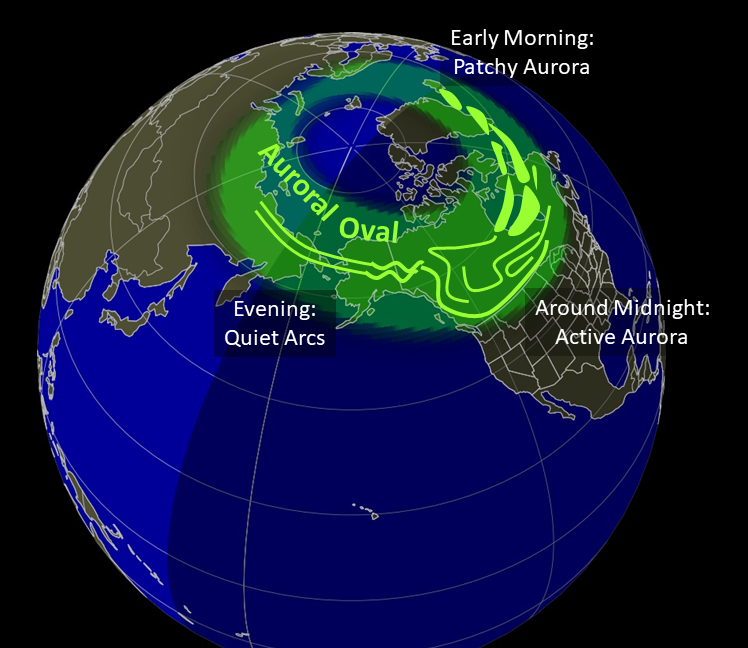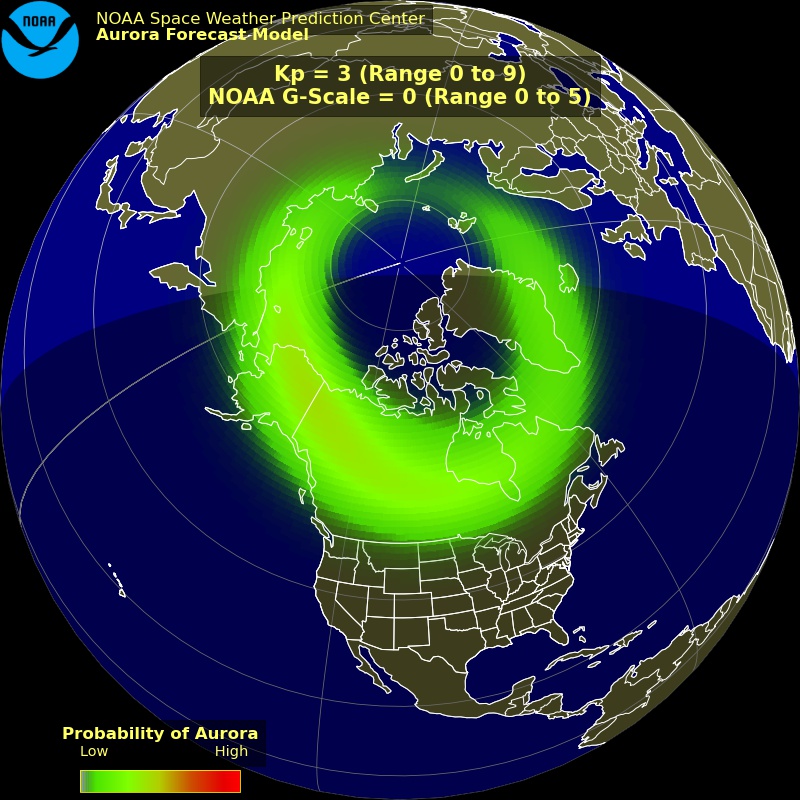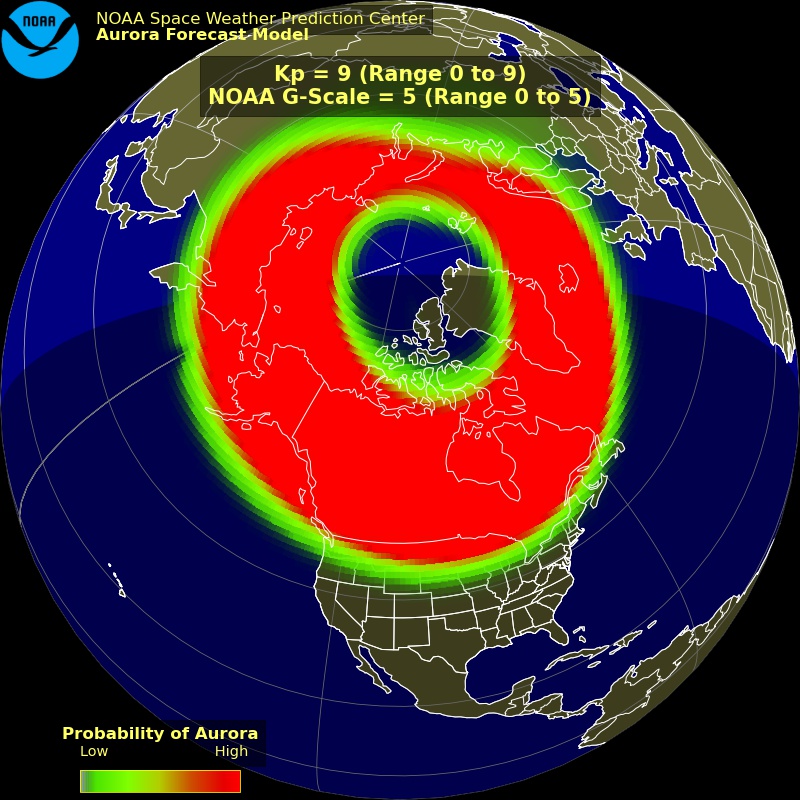Imagine standing beneath a sky painted with vibrant hues of green, pink, and purple, swirling like a cosmic masterpiece. Aurora prediction NOAA is your key to unlocking this breathtaking phenomenon. Whether you're an avid adventurer or a casual stargazer, understanding how NOAA forecasts these celestial displays can transform your experience. So, buckle up as we dive deep into the science, tools, and tips to make your aurora hunting dreams a reality.
Picture this: you're bundled up in the middle of nowhere, miles away from city lights, staring up at a dancing canvas of light. It’s not just luck that gets you here—it’s science. The National Oceanic and Atmospheric Administration (NOAA) plays a crucial role in predicting auroras, ensuring enthusiasts don't miss out on nature's grand light show. Let's explore how it works and why it matters.
As we journey through this guide, you'll learn everything you need to know about aurora prediction NOAA. From understanding solar storms to decoding forecast maps, we'll cover it all. By the end, you'll be equipped with the knowledge to plan your own aurora adventure. So, let's get started!
Read also:Penndot Photo Center Near Me Your Ultimate Guide To Finding The Best Photo Services
What Are Auroras and Why Should You Care?
Let’s break it down. Auroras, also known as the Northern Lights (Aurora Borealis) and Southern Lights (Aurora Australis), occur when charged particles from the sun interact with Earth's magnetic field. This collision creates a dazzling light show that captivates anyone lucky enough to witness it. But why should you care? Beyond their sheer beauty, auroras offer a glimpse into the intricate dance between our planet and the sun.
For scientists, auroras are a window into understanding space weather. For travelers, they represent one of nature's most awe-inspiring spectacles. And for dreamers? Well, they're simply magical. With aurora prediction NOAA tools at your disposal, you can maximize your chances of catching this elusive wonder.
How Does NOAA Predict Auroras?
NOAA’s Space Weather Prediction Center (SWPC) is the powerhouse behind aurora forecasts. Here's how it works: The SWPC monitors solar activity using satellites like DSCOVR and GOES. When a coronal mass ejection (CME) or solar wind hits Earth's magnetosphere, it triggers geomagnetic storms. These storms are what cause auroras to light up the skies.
The SWPC issues alerts based on the Kp index, a scale measuring geomagnetic activity. A higher Kp number means stronger auroras and a greater likelihood of seeing them at lower latitudes. By combining real-time data with historical patterns, NOAA provides accurate predictions that help aurora chasers plan their trips.
Key Tools Used by NOAA
- ACE Satellite: Monitors solar wind conditions in real-time.
- DSCOVR Satellite: Provides advanced warning of incoming CMEs.
- GOES Satellites: Track geomagnetic storms and solar flares.
These tools work together to create a comprehensive picture of space weather. For example, if a CME is detected heading toward Earth, NOAA can estimate its arrival time and intensity. This information is then translated into user-friendly aurora forecasts.
Understanding the Kp Index and Its Role
The Kp index is the backbone of aurora prediction NOAA. Ranging from 0 to 9, this scale measures geomagnetic activity. A Kp value of 5 or higher indicates a geomagnetic storm strong enough to produce visible auroras. But what does this mean for you?
Read also:Jonathan Hearn Release Date The Countdown Begins For Fans Worldwide
If you're near the Arctic Circle, even a Kp 3 might give you a glimpse of the lights. However, if you're further south, you'll need a Kp 7 or higher to see auroras. The key takeaway? Knowing the Kp index helps you determine when and where to look for auroras.
How to Read NOAA Aurora Forecast Maps
NOAA provides stunning forecast maps that show where auroras are likely to occur. These maps use color-coded rings to represent the auroral oval—the region where auroras are most active. Green rings indicate low activity, while red rings signify intense activity.
When reading these maps, pay attention to the timing. NOAA updates its forecasts every 30 minutes, so checking regularly ensures you have the latest information. Additionally, consider local weather conditions, as cloud cover can obscure your view of the lights.
Why Aurora Prediction Matters for Space Weather
Auroras aren't just pretty lights—they're indicators of space weather. Space weather refers to conditions in space that can affect satellite operations, power grids, and communication systems. Strong geomagnetic storms can disrupt GPS signals, interfere with radio communications, and even cause power outages.
By predicting auroras, NOAA helps protect critical infrastructure. For example, power grid operators can take preventive measures during geomagnetic storms to avoid blackouts. Similarly, airlines can reroute flights to avoid radiation exposure in polar regions. In short, aurora prediction NOAA isn't just about chasing lights—it's about safeguarding our modern world.
Real-Life Examples of Space Weather Impacts
- In 1989, a geomagnetic storm caused a blackout in Quebec, Canada, affecting millions of people.
- In 2015, NOAA issued warnings about a solar storm that disrupted radio communications worldwide.
These examples highlight the importance of monitoring space weather. By staying informed, we can better prepare for its effects.
Best Practices for Aurora Hunting
Now that you know how NOAA predicts auroras, let's talk about how to maximize your chances of seeing them. Here are some tips to keep in mind:
- Choose a location with minimal light pollution.
- Check the moon phase; a new moon offers darker skies.
- Monitor NOAA forecasts regularly for updates.
- Be patient and flexible with your plans.
Remember, auroras are unpredictable, so having a backup plan is essential. If conditions aren't favorable one night, try again the next. Persistence pays off when it comes to aurora hunting.
Top Destinations for Aurora Viewing
Some places are better than others for witnessing the Northern Lights. Here are a few top destinations:
- Iceland: Offers stunning landscapes and easy access to dark skies.
- Abisko, Sweden: Known for its clear skies and Aurora Sky Station.
- Yellowknife, Canada: One of the best spots in North America.
Each location has its own unique charm, so choose one that fits your travel style and budget.
Decoding NOAA Aurora Alerts
NOAA sends out alerts whenever a geomagnetic storm is expected. These alerts are categorized by severity:
- G1 (Minor): Minimal impacts, auroras visible near the Arctic Circle.
- G2 (Moderate): Possible disruptions to satellite operations, auroras visible at lower latitudes.
- G3 (Strong): Likely to cause power grid fluctuations, auroras visible in northern U.S. states.
Understanding these categories helps you gauge the potential impact of a storm. For example, a G3 storm might warrant extra precautions if you rely on satellite-dependent technology.
How to Sign Up for NOAA Alerts
Staying informed is easy with NOAA's email and SMS alert system. Simply visit their website and subscribe to receive notifications. You can customize your alerts to focus on specific regions or types of storms. This way, you'll never miss an opportunity to witness the auroras.
Common Misconceptions About Aurora Prediction
There are a few myths surrounding aurora prediction NOAA. Let's debunk them:
- Myth: Aurora forecasts are always accurate.
Fact: While NOAA strives for precision, auroras are influenced by many variables, making exact predictions challenging. - Myth: You need to be near the poles to see auroras.
Fact: During strong storms, auroras can appear as far south as Florida or Texas.
By understanding these misconceptions, you can approach aurora hunting with realistic expectations.
How to Separate Fact from Fiction
Always rely on trusted sources like NOAA for accurate information. Social media and amateur websites may spread misleading claims, so double-check facts before planning your trip. Staying informed ensures a successful aurora adventure.
Final Thoughts: Your Journey Begins Here
Now that you're armed with knowledge about aurora prediction NOAA, it's time to take action. Whether you're a seasoned traveler or a first-time aurora hunter, the tools and tips in this guide will help you plan an unforgettable experience.
Don't forget to share your adventures with others. Leave a comment below sharing your favorite aurora moment or ask questions if you're unsure about anything. And while you're at it, check out our other articles for more travel inspiration.
Remember, the Northern Lights are waiting for you. All you need is a little preparation and a lot of wonder. So, what are you waiting for? Start your journey today!
Table of Contents
- What Are Auroras and Why Should You Care?
- How Does NOAA Predict Auroras?
- Understanding the Kp Index and Its Role
- Why Aurora Prediction Matters for Space Weather
- Best Practices for Aurora Hunting
- Decoding NOAA Aurora Alerts
- Common Misconceptions About Aurora Prediction
- Final Thoughts: Your Journey Begins Here
- Top Destinations for Aurora Viewing
- How to Separate Fact from Fiction


